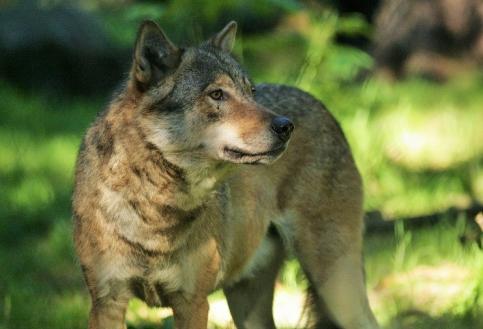Wolves are suggested to use olfaction to home in on wounded prey by the smell of their blood. It is, however, unknown whether a single blood volatile can elicit a behavioral response in wolves as efficiently as the whole chemical mixture of blood. A recent study analyzing the composition of volatiles in pig blood identified the substance trans-4,5-epoxy-(E)-2-decenal to evoke a typical “metallic, blood-like” odor quality in humans. It was therefore the aim of the present study to assess and compare behavioral responses of Eurasian wolves (Canis lupus) to the odor of mammalian blood and to the blood odor component trans-4,5-epoxy-(E)-2-decenal.
Two groups of captive wolves were presented with wooden logs impregnated with either the blood odor component, horse blood, a fruity odor or a near odorless solvent. Whereas one group of wolves displayed little interest in the odorized logs overall, the other group of wolves displayed a significantly higher number of interactions with the odorized logs when presented with the blood component and the horse blood compared to the fruity odor and the solvent. Further, this group of wolves displayed no significant difference in the number of interactions between the blood component and the horse blood. This demonstrates that wolves are able to detect and behaviorally respond to the blood odor component trans-4,5-epoxy-(E)-2-decenal as efficiently as to the whole chemical mixture of horse blood. The results further suggests that prey-associated odors, such as blood or a blood odor component, may be efficiently used as environmental enrichment for wolves.

Responsible for this page:
Director of undergraduate studies Biology
Last updated:
05/03/16
